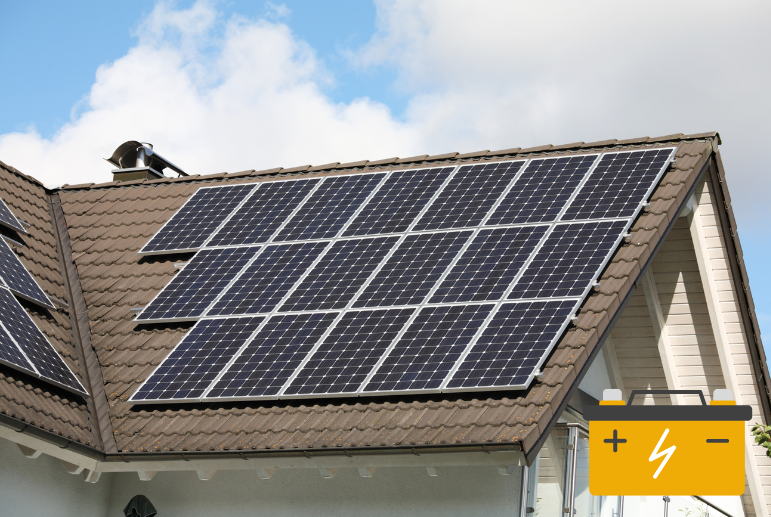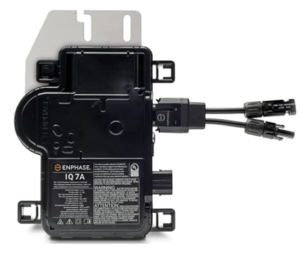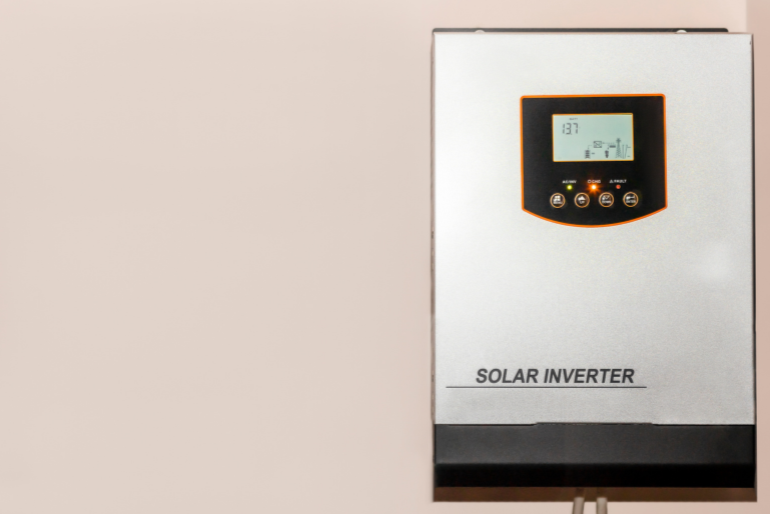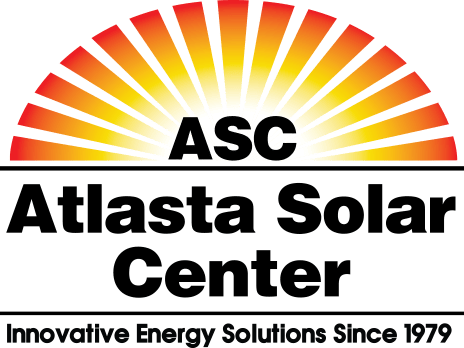If you want to go solar, are currently upgrading your system, or need to replace an inverter, it’s helpful to know about inverter systems. Why? Each inverter system can have different effects on power production and can determine the number of solar panels installed. So which do you go with–microinverters or central battery systems?
This is why choosing a contractor you are comfortable with is important. An experienced solar contractor can help you understand just how solar systems and their components work, as well as optimize a solar array that best fits your energy needs.
In today’s blog post, Atlasta Solar Center explores the differences between inverter systems, in particular the differences between Enphase batteries and central inverter battery systems.
Inverters and Batteries

Before we examine inverter systems, it’s important to understand the relationship between inverters and batteries.
An inverter is a device that converts direct current (DC) electricity into alternating current (AC). This is essential as the power generated by solar panels is DC electricity. However, this type of electricity cannot be used by the grid. An inverter ensures that the power generated by your solar array can be used to power your home.
Inverters are mandatory for any solar panel system to work as it should—providing power for your home.
Solar batteries are not mandatory but are certainly useful. Solar batteries store excess energy you can use at times when your panels are not producing energy, such as at nighttime. The general rule of thumb is to keep the inverter and solar batteries as close together as possible. Now, some companies are manufacturing inverters that have solar batteries built right in.
Understandably, some consumers have concerns over solar battery safety. Fortunately, solar batteries are very safe and stable. Lithium-iron phosphate batteries are the safest types of solar batteries. This kind of battery is relatively maintenance-free compared to other batteries. If you ever have any questions about solar batteries, or about solar systems in general, contact us at 970.248.0057 for more information.
Types of Inverters
While all solar inverters have the same goal of converting DC into AC electricity, inverters can vary in how and where they are installed.
The type of inverter system can also affect the scalability of a solar array. This means how many solar panels can be added (which we’ll talk more about, further below).
Generally speaking, there are three types of inverter systems: microinverters, string inverters, and power optimizers system.
Microinverters – Panel Level DC to AC Conversion
A small inverter is installed on the backside of each solar panel. This means that these inverters convert DC into AC right on the roof.
Pros and cons: As this system is individualized rather than centralized, if one inverter fails, or a section of panels are shaded, this does not impact the performance of the rest of the panels. This makes the microinverter system far more reliable than other inverter systems.
As microinverters are a newer technology and require installation upon each solar panel, these systems tend to be more expensive than other inverter systems.
String Inverters – Centralized DC to AC Conversion
With this system, panels are grouped together with each panel connecting to a “string.” Multiple “strings” then connect to a single inverter. This single inverter makes string inverters a centralized system. The inverter is usually installed in the garage or the side of the house.
Pros and cons: Of the solar inverter systems, string inverters have been around the longest. Compared to microinverters, string inverters are less expensive.
The drawback is if a single panel’s performance is reduced by shade, snow, debris, etc., the performance of the entire solar array is affected. And if the string inverter itself fails, then the power generated cannot be used at all.
Power Optimizers System – Centralized DC to AC Conversion
Power optimizers optimize the power input of each panel independently. This makes power optimizers similar to microinverters. Where power optimizers are different is that they “condition” the DC electricity, and then send the power along a string converter for conversion in a central inverter.
Pros and cons: Power optimizer systems help reduce the effect of shade on system performance. However, if the central inverter itself malfunctions, then the entire solar array is affected.
Now that you know the basics of inverter systems, let’s compare Enphase batteries and central inverter battery systems.
Enphase Batteries and Central Inverter Battery Systems: Which Is Best?
Enphase is one of the leading brands of solar microinverters. How do Enphase microinverters compare to central inverters available on the market for residential use?
Enphase Microinverters

Enphase manufactures microinverters. Based in Northern California, Enphase does not have any string inverters in their product lineup. As noted before, microinverters mean a small inverter is placed on the backside of each solar panel. As these inverters are exposed to the elements (wind, rain, snow, etc.) they are made to withstand them.
Atlasta Solar Center is proud to carry Enphase microinverters, so if you’re ready to have a solar system installed (or need a microinverter replaced), know that we have these microinverters in stock!
Enphase offers a technology that monitors each panel. This can be viewed from your phone or the web. You can see how much power is generated at any time. Of note: Enphase’s monitoring system is provided by a separate product, IQ Envoy.
Enphase Battery
Enphase makes batteries that integrate easily with their inverters and software—an all-in-one solution.
What Happens If An Enphase Microinverter Malfunctions?
If one microinverter fails, the other microinverters continue to work. This makes Enphase microinverters more dependable than other inverter systems.
Scalability
With Enphase microinverters, you have more flexibility to scale. How? You can simply have more panels installed, each with a microinverter.
Warranty
Enphase microinverters typically last about 25 years, which is about the same lifespan as solar panels.
Cost
Microinverter systems are generally more expensive.
Central Inverter Battery Systems

Depending on the brand, central inverter battery systems may pair with power optimizers. This means that a central inverter is installed in the garage, basement, or on an outside wall. This inverter handles DC to AC conversion while a power optimizer unit is bolted onto the back of each panel.
Battery for Central Inverter Systems
A battery may be integrated into the central inverter. However, like the central inverter, this battery is a single point of failure. If this battery malfunctions, excess power is unable to be stored.
What Happens If A Central Inverter Malfunctions?
If a central inverter malfunctions, the entire system will fail to produce power that you can use. In other words, central inverter systems have a single point of failure, unlike microinverter systems.
Scalability
Scalability is limited with central inverter systems. To explain, the size of the central inverter will affect how many solar panels it can handle. For example, let’s say you want an electric vehicle. You’ll need more power, so you’ll have to change the central inverter if you require more solar panels.
Warranty
Power optimizers can last around 25 years, but central inverters only have a 12-year warranty. This means you will likely need to replace the inverter during the lifespan of your solar panels.
Cost
Power optimizer systems and string inverter systems are generally less expensive than microinverter systems.
Conclusion: Which Inverter Is Best?
Based on operating factors, we at Atlasta Solar Center strongly recommend Enphase microinverters. As microinverters eliminate single-point failure, this system is more reliant compared to other inverter systems. Enphase batteries also integrate well with Enphase microinverters, providing an all-in-one solution. Plus, these microinverters typically last the same amount of time as a solar array (25 years). While microinverters may be more expensive than central inverters, we believe the benefits Enphase batteries provide are well worth the investment.
Ready to harness the power of the sun? Contact Atlasta Solar Center, Western Colorado’s #1 solar, energy storage, and EV charging station solution, at 970.248.0057.
